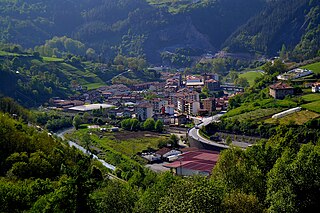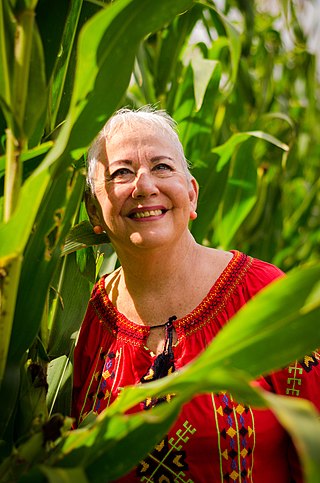Legorreta could refer to:
- Legorreta, Spain, a town in the Basque Country of Spain
- Legorreta (surname), a Mexican surname
Legorreta could refer to:

The vaquita is a species of porpoise endemic to the northern end of the Gulf of California in Baja California, Mexico. Reaching a maximum body length of 150 cm (4.9 ft) (females) or 140 cm (4.6 ft) (males), it is the smallest of all living cetaceans.

The Fashion and Textile Museum is an English museum.
Ricardo Legorreta Vilchis was a Mexican architect. He was a prolific designer of private houses, public buildings and master plans in Mexico, the United States and some other countries.

Carnegie Mellon University in Qatar is a satellite campus of Carnegie Mellon University in Doha, Qatar. This campus is a member of the Qatar Foundation and started graduating students in May 2008. It enrolls around 400 students, has 60 faculty and postdoctoral researchers, and 90 staff members.

Legorreta is a town and municipality located in the Goierri region of the province of Gipuzkoa, in the autonomous community of the Basque Country, northern Spain.

Mi Destino Eres Tú is a Mexican telenovela produced by Carla Estrada for Televisa that premiered on July 10, 2000 and ended on November 10, 2000. It is an original story by Carmen Daniels and Jorge Lozano Soriano. Lucero sang the theme song of the series, being released in the album Mi destino. It stars Lucero, Jorge Salinas, Susana Zabaleta and Jaime Camil.

Museo de Arte Contemporáneo de Monterrey, abbreviated as MARCO, is a major contemporary art museum, located in the city of Monterrey, in Nuevo León state of northeastern Mexico.
The architecture of the U.S. state of Texas comes from a wide variety of sources. Many of the state's buildings reflect Texas' Spanish and Mexican roots; in addition, there is considerable influence from mostly the American South as well as the Southwest. Rapid economic growth since the mid twentieth century has led to a wide variety of contemporary architectural buildings.

The Anillo Periférico known by locals as el periférico is the outer beltway of Mexico City.
Mexican immigration to Spain refers to the Mexican population in Spain and their Spanish-born descendants. The Mexicans living in Spain are composed primarily of students, skilled professionals, spouses of Spaniards, as well as Mexican citizens who also have Spanish nationality. In December 2008, the National Statistics Institute in Spain had 14,399 registered Mexicans within its territory, of which 7,210 hold other nationalities of the European Union or are family members of EU citizens. To this number must be added those with dual nationality, who are not in Spanish records as foreigners. Mexican and Spanish laws allow dual citizenship, and many Mexicans who have asked for it, whether they are residents in Spain as grandchildren or they are children of Spanish migrants to Mexico. In 2010, the Ministry of Foreign Affairs of Mexico recorded 21,107 Mexicans living in Spain, who became the third largest Mexican community residing abroad, after the United States and Canada; and the largest Mexican community in Europe.
Legarreta is a surname. Notable people with the surname include:

The Torre BBVA México is a skyscraper on Paseo de la Reforma in Colonia Juárez, Mexico City. It is the headquarters of BBVA México, Mexico's largest bank. Upon its completion in 2015 it became the second tallest building in Mexico City at 235 metres (771 ft) and 50 stories high. However by 2018 it is expected to be the fourth tallest in Mexico, after Torre KOI, Torre Reforma and Punto Chapultepec.

Amor mío is a Mexican telenovela produced by Roberto Gómez Fernández and Giselle González for Televisa. The series is an adaptation of the Argentine telenovela of the same name created by Romina Yan & Cris Morena. Vanessa Guzmán and Raúl Araiza star as the protagonists, while Rosa Maria Bianchi and Manuel "Flaco" Ibáñez star as the co-protagonists.
Un original y veinte copias is a Mexican telenovela produced by Guillermo González for Canal de las Estrellas in 1978. It is a remake of the 1958 Mexican telenovela Gutierritos produced by Valentín Pimstein.
César Armando Librado Legorreta is a Mexican serial killer known as El Coqueta, who was convicted of six rapes and murders of women in the Greater Mexico City.
Víctor Legorreta Hernández is a Mexican architect, son of the architect Ricardo Legorreta Vilchis.
Legorreta is a surname found in Mexico. Notable people with the surname include:

Enriqueta Medellín was a Mexican surgeon and environmentalist. Raised in Mexico City, from a young age she participated in projects to clean up the city and became interested in the links between disease and the environment. She earned a degree as a medical surgeon from the National Autonomous University of Mexico and specialized in human genetics. She also studied environmental education and management.

Enriqueta Legorreta was a Mexican soprano and activist. She grew up in Mexico City and studied opera at the Conservatorio Nacional de Música. Debuting in 1941, she earned praise for her portrayal of Sieglinde in Wagner's Die Walküre and was noted as the first Mexican woman to sing a Wagnerian opera. She was one of the pioneering singers who joined and performed in the inaugural season of the Ópera Nacional, performing Leonora in Beethoven's Fidelio in 1943. During her career, which lasted into the mid-1970s, she sang with many well-known conductors and musicians, including Claudio Arrau, Leonard Bernstein, Pablo Casals, Igor Stravinsky, and Isaac Stern. She was also involved in protests against the opera association to ensure that singers were paid for their professional work, rather than their affiliations with officials.
Ravelo is a surname and given name of Spanish origin, originating as a habitational surname. Notable people with the surname or given name include: